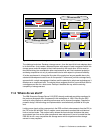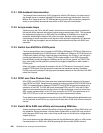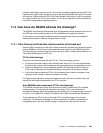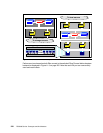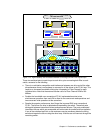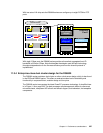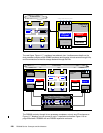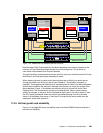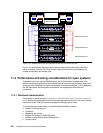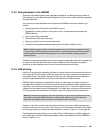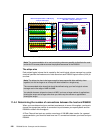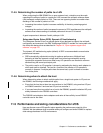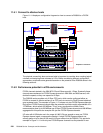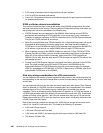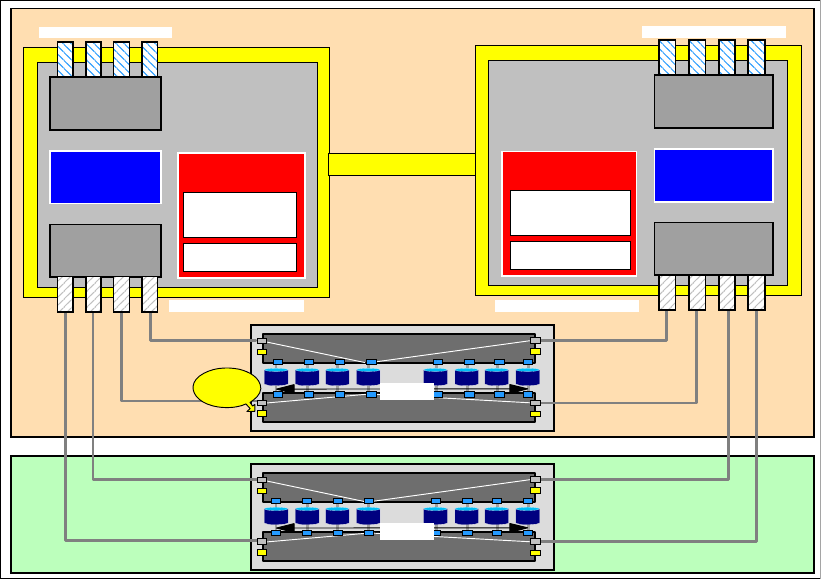
Chapter 11. Performance considerations 229
Figure 11-8 DS6800 with one DS6000 expansion enclosure
Note that each Fibre Channel switch in the disk subsystems from here on connects to the
next pair of Fibre Channel switches through its two remaining ports. This is similar to
inter-switch links between Fibre Channel switches.
Through the affinity of extent pools to servers, the DA in a server is used to drive the I/O to the
disk drives in the host extent pools owned by its server.
When creating volumes in extent pools, these volumes get an affinity to a certain server
through the extent pool affinity to a server (see Chapter 4, “Virtualization concepts” on
page 65). This suggests even distribution of volumes across all ranks in the disk subsystems
and all loops to balance the workload. Although each HA port can reach any volume in the
disk subsystem, Figure 11-8 indicates also a server affinity to its local HA and its Fibre
Channel ports. This introduces the concept of a preferred path. When a volume has an
affinity, for example, to server 0, and is accessed through a port in the HA of server 0, then
the I/O is locally processed. When this volume is accessed through the HA of the other
server, in this example from server 1, then the I/O is routed to the server which owns the
extent pool, which here is server 0.
11.3.5 Vertical growth and scalability
Figure 11-9 on page 230 shows a simplified view of the basic DS6000 structure and how it
accounts for scalability.
2 Gbps Fibre Channel ports
Card 1
Controller
chipset
Host adapter
chipset
Power PC
memory
Processor
Persistent
Volatile
2 Gbps Fibre Channel ports
chipset
Device adapter
Card 0
Controller
chipset
Host adapter
chipset
Power PC
memory
Processor
Persistent
Volatile
2 Gbps Fibre Channel ports
chipset
Device adapter
2 Gbps Fibre Channel ports
ooo
Fibre Channel switch
Fibre Channel switch
ooo
Fibre Channel switch
Fibre Channel switch
Server enclosure
Expansion enclosure
16 DDM
16 DDM
To next
switch
Server 1Server 0
Interconnect



